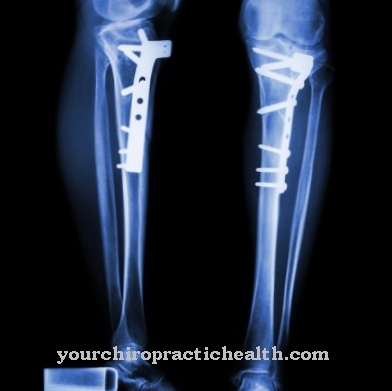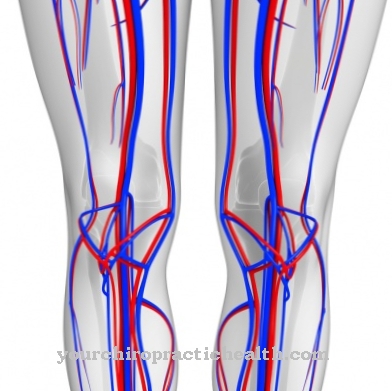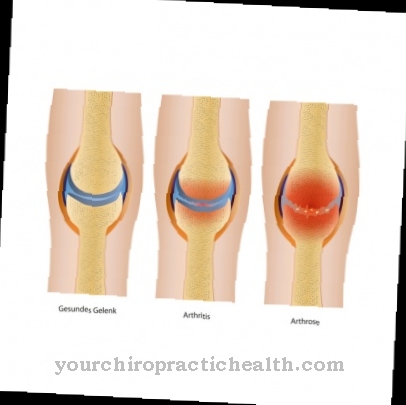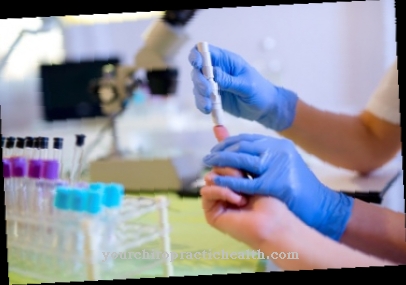A Sports therapy is used for different purposes. These are mainly prevention and rehabilitation. Which exercises and sports are suitable depends, in particular, on the patient's symptoms and underlying diseases.
What is Sports Therapy?

Exercise therapy is a non-drug treatment. Its origins can be traced back to the 19th century. Nowadays it is gaining more and more popularity and application. Ultimately, sports therapy should alleviate, compensate or regenerate psychological and / or physical complaints. Secondary damage can be prevented with the help of the exercises. Furthermore, social factors should be strengthened and awareness of one's own health promoted.
In addition to the active component, sports therapy itself consists of educational, psychological and sociotherapeutic elements. Body awareness, coordination and stamina should be increased during the various sessions. The endeavor of sports therapy is not competitive sports. Instead, it should activate the affected person and help them to improve their health. The doctor decides when specific sports therapy is helpful. However, practicing regular sporting activities as a matter of principle can help prevent numerous complaints.
Function, effect & goals
The methods of sports therapy are diverse. Not every sport is suitable for every patient. For example, people who have recently been operated on cannot participate in a swimming course or people with damaged knees can jog. Accordingly, it is the task of trained staff to choose the right workouts and to accompany the patient professionally at the beginning. While the doctor orders the therapy, the planning and dosage are therefore at the discretion of the movement therapist.
In the context of such an approach, the aim is often to care for mentally ill people, to help them to have a better life and body awareness, and to reduce the level of suffering associated with mental and psychological disorders. Depending on the complaints, the appointments take place in individual sessions or in a smaller group. Working with other patients enables the training of social skills. One of the methods is concentrative movement therapy. Here, patients usually only receive a few guidelines that need to be implemented. Instead, the therapist creates a connection to the current situation. The approach is, for example, about discovering the space, simulating certain actions or trying out different gaits.
Doing and experiencing is understood by concentrative movement therapy not only as the focus, but also as movement. Patients should be aware of both their bodies and their actions. After the physical part, the session is dealt with verbally. Here internal and external conflicts, feelings or aspirations should be discussed. In general, concentrative movement therapy enables participants to learn to be close to other people or to consciously reveal individual boundaries. Feelings or fears that arise during the interaction may provide clues about the state of mind. It is therefore important that the session always ends with a detailed discussion. The aim of the therapy is, among other things, to give those affected an opportunity to express themselves non-verbally. Open communication is difficult for many sick people.
Another method that is often used for medical reasons is integrative movement therapy. Individual appointments are rare, instead it's an approach that requires interaction with other people. Body, feelings and thoughts should be perceived consciously. Sports therapy, however, is not aimed exclusively at mental illnesses. It also includes exercises that, for example, restore mobility after an operation. In the case of a herniated disc, for example, strengthening the back muscles can be helpful, and after knee surgery, gently bending and stretching the leg.
You can find your medication here
➔ Medicines against tension and muscle painRisks, side effects & dangers
As a rule, symptoms are not to be expected with sports therapy. On a psychological basis, it can happen when a patient is unwilling to open up in the group or in general, which may lead to a refusal. Furthermore, it cannot be ruled out that the approach will not lead to the hoped-for success. However, it is unlikely that exercise will have a negative impact on the health of the person concerned.
However, symptoms can arise during sports therapy for the regeneration of physical illnesses. These occur more frequently when the physiotherapist gives the patient some exercises for home use and these are performed incorrectly. Especially during workouts that affect the back or the knees, errors in application can often be discovered, which may result in further complaints. For example, it is important that a joint is never fully stretched during an exercise, but always maintains a slight incline in the end and starting position. Furthermore, attention should always be paid to a posture in which the back is in a straight line and no hollow back is formed.
Otherwise the development of tension in the muscles cannot be ruled out. These are mainly noticeable through pain. The affected area is often hardened and, depending on its location, can restrict the movement of certain parts of the body. Too early stress in sports therapy for recently operated joints often results in pain and poor healing of the wound. Especially after knee surgery, the leg should be moved slowly and the joint should not be strained immediately by bending.

























.jpg)

.jpg)
